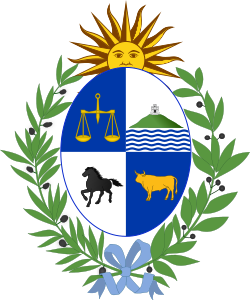 |
|---|
Constitutional Assembly elections were held in Uruguay on 25 June 1933. [1] They followed a presidential coup by Gabriel Terra on 31 March, [2] [3] Following the coup, the Assembly was appointed to formulate a new constitution. [3] The various factions of the Colorado Party emerged as the largest group in the Assembly, winning 151 of the 284 seats. [4]